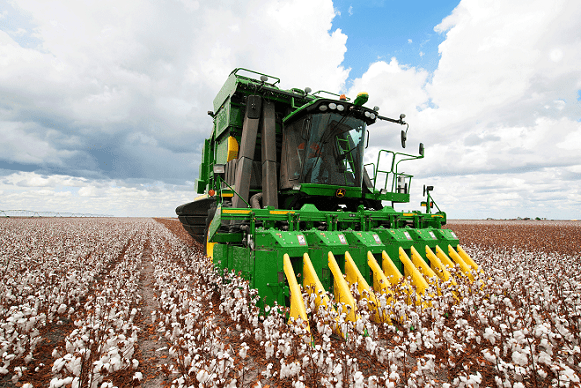
PICKING of this season’s drought-depleted cotton crop is drawing to a close in Queensland as the harvest moves into full swing in northern New South Wales and starts to get underway in central and southern NSW.
Production estimates for the national crop have continued to decline throughout the season, with Cotton Australia at the start of the season in September initially predicting 850,000 bales, but since revising that estimate down to the current level of 550,000 to 600,000 bales.
A crop this small has not been seen since the 1980s and comes in under the low of recent years of 601,480 bales in 2008.
It is a far cry from the record 5.3-million-bale crop picked in 2012.
As a result, there has been a substantial cutback in processing capacity with only 25 of the industry’s 38 gins operating this season.
Cotton Australia chief executive officer Adam Kay said fibre quality had been good despite the challenging season for growers.
“It was a year that was hot in the middle of the season, and while we all loved the rain that came later, it had an impact at the end of the season,” he said.
Mr Kay said with widespread rain in the main catchment areas bolstering water storages in recent months, prospects for next season’s crop were looking a lot brighter.
“At this stage we are estimating 1.6 to 2.0 million bales for next season which is a considerable pick up. Most of that increase is in south east and west Queensland around the Darling Downs, Dirranbandi and Border Rivers areas,” he said.
“It is looking up in NSW, but we still need a lot more water into the major storage dams there.”
Global consumption recovery
Meanwhile, the United States Department of Agriculture’s (USDA) first forecast for the 2020/21 marketing year shows record global cotton supply driving use higher as countries begin to recover from the COVID-19 pandemic.
Global consumption is expected to rebound 11 per cent to more than 116 million bales from the largest recorded drop in USDA’s production, supply and distribution database. However, use is projected only slightly above the 5-year average.
All top 10 consuming countries are expected to witness growth as uncertainties regarding the pandemic diminish.
China and India are forecast to expand consumption by 7 million bales combined, accounting for more than two-thirds of growth in global use.
Lingering disruptions are expected to cap global use to below levels witnessed 2 and 3 years prior when global consumption registered at more than 120 million bales.
Recovery in global cotton demand will depend on reopening of retail outlets and employment conditions in each country. Global cotton retail sales of cotton clothing and
furnishings in 2019/20 has plummeted due to consumer reluctance to congregate in stores, lost income, widespread stay-at-home orders, and the closure of many “non-essential” businesses including apparel stores.
Slight rise in ending stocks
Global ending stocks are forecast slightly higher with the 2021’s third-largest-ever carryin expected to boost global reserves to nearly 100 million bales, almost 20 million bales above two years earlier.
Although China is forecast to account for roughly one-third of global stocks, this is a historically low percentage. Government reserves are expected to remain at near current levels and well below the 5- year average.
However, private inventories will remain high. Stocks outside of China in 2020/21 are forecast to break the current year’s record.
India has accumulated over half the increase in stocks since 2018/19 as its price support program builds stocks.
Trade expansion
World trade is expected to expand significantly in 2020/21. The US, Brazil, and India are expected to capture the lion’s share of the expanded export opportunities. All three countries will have record or near-record exportable supplies due to large crops and very large carryin stocks.
Expanded world trade will be driven by higher import demand resulting from the recovery in consumption.
Imports in nearly all major importing countries are expected to rise. China’s imports are expected to expand by nearly 20pc, owing to a continuing shift in its State Reserve policy. Instead of reducing stocks, the Reserve’s objective is to rotate its stocks and thereby indirectly drive greater import demand as it reduces net sales from the Reserve.
Pakistan imports are also expected to grow sharply as use recovers while production remains at a lower level.
Large carryin stocks in India and Turkey are projected to dampen import demand and thereby offset year-over-year growth.
Source: USDA
Grain Central: Get our free daily cropping news straight to your inbox – Click here

HAVE YOUR SAY